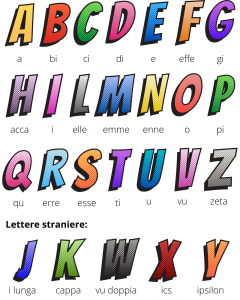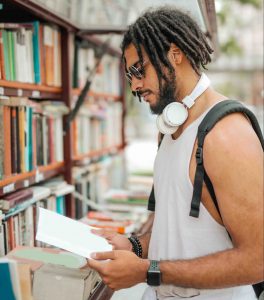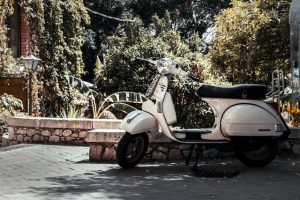Unità 1 – Benvenutə!

OBIETTIVI
- salutare le persone (formale e informale)
- presentarti
- chiedere il nome delle persone
- dire e chiedere di dove sei (formale e informale)
- dire e chiedere come stai (formale e informale)
- pronunciare le lettere dell’alfabeto
- usare frasi ed espressioni utili in italiano
- imparare i numeri da 0 a 100
- apprendere la questione del "genere" in italiano
COMUNICAZIONE
1. Per cominciare
1.1  Quanto conosci l’Italia? Guarda queste immagini e scrivi il nome delle città e dei monumenti italiani che riconosci.
Quanto conosci l’Italia? Guarda queste immagini e scrivi il nome delle città e dei monumenti italiani che riconosci.
La Torre di Pisa – I trulli di Alberobello – La Fontana di Trevi – Le Dolomiti
Venezia – Il David di Michelangelo – Le Cinque Terre
a.
 |
b.
 |
c.
 |
d.
 |
e.
 |
f.
 |
g.
 |
a. ____________________________________
b. ____________________________________
c. ____________________________________
d. ____________________________________
e. ____________________________________
f. ____________________________________
g. ____________________________________
1.2  Un po’ di geografia! Scrivi i nomi delle città e dei monumenti dell'esercizio 1.1.1 sulla mappa dell'Italia.
Un po’ di geografia! Scrivi i nomi delle città e dei monumenti dell'esercizio 1.1.1 sulla mappa dell'Italia.
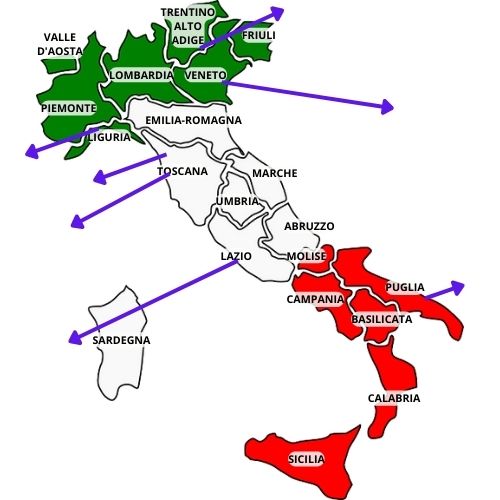 |
1.3
 Quanto conosci l’italiano?Va’ alla lavagna e scrivi tutte le parole in italiano che conosci. Poi, segna le parole sulla tua tabella.
Quanto conosci l’italiano?Va’ alla lavagna e scrivi tutte le parole in italiano che conosci. Poi, segna le parole sulla tua tabella.
 |
|
2. Mi presento
2.1  Saluti all’italiana! Guarda queste immagini e completa la tabella con i saluti.
Saluti all’italiana! Guarda queste immagini e completa la tabella con i saluti.
 |
 |
 |
 |
 |
 |
| formale | informale | |
| _Esempio: buongiorno__ | ______________ | |
|
______________ | ______________ |
| ______________ | ______________ | |
| ______________ | ______________ |
Clicca qui per la lista completa dei saluti.
 CULTURA I: Come si salutano gli italiani?
CULTURA I: Come si salutano gli italiani?
How do Italians greet each other?
In Italy, when you first meet someone, you usually exchange a handshake, especially in formal situations. On the other hand, when friends and relatives meet, Italians usually exchange two kisses on the cheek. But beware! Italians first kiss the left cheek and then the right; Americans do the opposite!
In everyday language, the standard-bearer of greetings is the friendly “CIAO”, which Italians use in informal situations, both at the beginning and at the end of an encounter. “BUON GIORNO/ BUONGIORNO” and “BUONA SERA/ BUONASERA” are more formal greetings than “CIAO”. While Italians use “BUON GIORNO/ BUONGIORNO” in the morning, the time of the day when they start using “BUONA SERA/ BUONASERA” varies from region to region (but generally after 2pm). The use of “BUON POMERIGGIO” is definitely rare: you can hear it almost exclusively on television or at the airport. Finally, Italians say “BUONA NOTTE” only when they leave late in the evening or before they go to bed.
This reading is an adaptation and translation of the Italian article published in La Repubblica by Simonetta Losi.
![]() Think about the different kinds of greetings people use in the United States. Have you ever met a person and had an unusual experience when you had to greet them? During your travels abroad, what was your experience with greetings?
Think about the different kinds of greetings people use in the United States. Have you ever met a person and had an unusual experience when you had to greet them? During your travels abroad, what was your experience with greetings?
2.2
 Nome e provenienza. In cerchio, lanciando una palla, fa’ le seguenti domande ai tuoi compagni/ alle tue compagne. Poi, completa la tabella.
Nome e provenienza. In cerchio, lanciando una palla, fa’ le seguenti domande ai tuoi compagni/ alle tue compagne. Poi, completa la tabella.
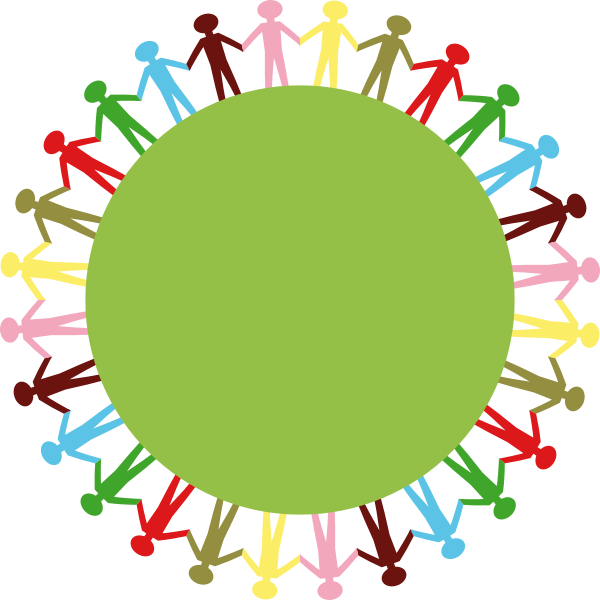 |
1. Ciao, io mi chiamo….. (Es. Daria) E tu, come ti chiami?
2. Io sono di Roma. E tu, di dove sei? 3. Io sono di Roma. E Lei, di dove è? |
4. Io sono italiana. E tu sei italiano/a?
5. Io mi chiamo… E Lei, come si chiama? |
 Occhio alla grammatica!
Occhio alla grammatica!
| essere | chiamarsi | |
| io | sono | mi chiamo |
| tu | sei | ti chiami |
| Lei | è | si chiama |
| formale | informale | |
| tu | ______________ | ______________ |
| Lei | ______________ | ______________ |
2.3 
 Come stai? Ascolta i dialoghi e completa gli spazi vuoti con le parole mancanti.
Come stai? Ascolta i dialoghi e completa gli spazi vuoti con le parole mancanti.
| 1) | M: Ciao, Laura, come stai? Tutto bene?
L: Sì, Marco, oggi sto ____________. E tu? M: ____________, oggi sono un po’ stanco. L: Mi dispiace. A domani. M: Ciao, a presto.
|
| 2) | I: Buongiorno, Sig.ra Scego. Come sta?
S: Buongiorno, Sig. Issaa, io ____________. E Lei? I: Io ____________ ____________ ____________. Che bella giornata! S: Veramente! ArrivederLa! I: ArrivederLa e a presto!
|
| 3) | B: Ciao, Carola. Come va?
C: Buona sera, Sig.ra Billi, purtroppo oggi sto ____________. E Lei? B: Oh…mi dispiace molto. Tutto bene? C: Sì, sì, ho qualche problema a scuola. Le auguro una buona serata! B: Anche a te! Buona notte. |
 Formale o informale? Completa la tabella con una "X"...
Formale o informale? Completa la tabella con una "X"...
| formale | informale | |
| Come stai? | ______________ | ______________ |
| Come sta? | ______________ | ______________ |
| Come va? | ______________ | ______________ |
...e associa le parole alle immagini, come nell'esempio.
😁 😊 😋 🙂 😐 😞 😩
bene, male, così così, non c’è male, malissimo, abbastanza bene, benissimo
2.4  Pratichiamo! A coppie, immaginate una conversazione informale tra Bebe e Samantha, e una conversazione formale tra Margherita e Rita. Usate le informazioni nella tabella e i dialoghi dell’esercizio 2.2.1 come modello.
Pratichiamo! A coppie, immaginate una conversazione informale tra Bebe e Samantha, e una conversazione formale tra Margherita e Rita. Usate le informazioni nella tabella e i dialoghi dell’esercizio 2.2.1 come modello.
| nome | Bebe | Samantha | Margherita | Rita |
| città | Venezia | Milano | Firenze | Torino |
| condizione | bene | così così | benissimo | male |
Per informazione su queste importanti donne italiane:
PRONUNCIA
3.1 L’alfabeto
3.1.1 
 Pratichiamo! A coppie, scegliete 5 nomi di persone italiane famose e, a turno, fate lo spelling al vostro compagno/ alla vostra compagna come nell’esempio.
Pratichiamo! A coppie, scegliete 5 nomi di persone italiane famose e, a turno, fate lo spelling al vostro compagno/ alla vostra compagna come nell’esempio.
 |
Esempio: Studente A: Dante di – a – enne – ti – e Studente B: Eco e – ci – o |
3.2 Alcuni suoni importanti!
Alcuni suoni importanti!
| a | e | i | o | u | ||
| ca | che | chi | co | cu | ||
| ce | ci | |||||
| ga | ghe | ghi | go | gu | ||
| ge | gi | |||||
| gl (tagliatelle) | gn (gnocchi) | |||||
| sca | sche | schi | sco | scu | ||
| sce | sci |
3.2.1  Errori da evitare!Guarda questo video e fa’ attenzione alla pronuncia.
Errori da evitare!Guarda questo video e fa’ attenzione alla pronuncia.
Non fare come Brad Pitt nel film!
| In italiano è:
BUONGIORNO /bwonˈʤorno/ GRAZIE [‘grattsje] CORRETTO /korˈrɛtto/ ARRIVEDERCI /arrive’derʧi/ |
STRUTTURE
4.1 Maschile o femminile?
4.1.1  Leggi il dialogo e metti le frasi in ordine.
Leggi il dialogo e metti le frasi in ordine.
A. Mah…non c’è male! Ti presento Adele, una mia amica di Philadelphia. Lei è una studentessa del Bryn Mawr College. Adele, questo è Francesco, un mio amico di Roma. Lui è uno studente di Filosofia.
B. Ciao Francesco, molto piacere.
C. Ciao Rachele! Io sto benissimo. E tu?
D. Ciao Francesco, come stai?
E. Ciao Adele, il piacere è il mio.
- ____
- ____
- ____
- ____
- ____
4.1.2  Osserviamo!
Osserviamo!
Mah…non c’è male! Ti presento Adele, una mia amica di Philadelphia. Lei è una studentessa del Bryn Mawr College. Adele, questo è Francesco, un mio amico di Roma. Lui è uno studente di Filosofia.
Perché in italiano uso “una amica” e “un amico”? E “una studentessa” e “uno studente”?
4.1.3  Completa la tabella con le parole della lista, mettendole nella categoria appropriata come nell’esempio.
Completa la tabella con le parole della lista, mettendole nella categoria appropriata come nell’esempio.
| libro > libri
ragazzo > ragazzi amico > amici penna > penne ragazza > ragazze pizza > pizze fiore > fiori notte > notti stazione > stazioni |
|
Poi, completa la tabella con la regola generale del maschile/femminile in italiano.
| singolare | plurale | |
| maschile | ______________ | ______________ |
| femminile | ______________ | ______________ |
| maschile/ femminile | ______________ | ______________ |
4.1.4  Pratichiamo! Indica se le seguenti parole sono maschili o femminili. Poi, trasforma le parole al plurale come nell’esempio.
Pratichiamo! Indica se le seguenti parole sono maschili o femminili. Poi, trasforma le parole al plurale come nell’esempio.
Esempio: libro = maschile —> plurale: libri
libro – caffè – amica – gelato – birra – scuola
lezione – notte – università – computer – automobile
Clicca qui per la spiegazione della regola grammaticale in italiano.
 CULTURA II: Il problema del genere in italiano
CULTURA II: Il problema del genere in italiano
The issue of “gender” in Italian
In Italian, gender is almost always expressed grammatically. As we have seen, word endings usually carry information on the grammatical gender of nouns, adjectives, and articles. In many cases, it is assumed that the grammatical gender corresponds to the gender of the person designated by a given noun. For example, la studentessa is a feminine noun designating a female student, while lo studente is a masculine noun designating a male student. This binary is often problematic, and the Italian language has been evolving to be more inclusive.
Masculine nouns for professional women?
Many names designating professions (such as l’architetto, ‘architect’ and sindaco, ‘mayor’) used to exist only in the masculine form, even when they were applied to women. For example, we would say “Carla è un architetto.” In the past few years, things have been changing, and many people now use l’architetta, la sindaca, etc. to talk about professionals that identify as women.
Inclusive endings
Gendered endings make it difficult to address non-binary people or to talk about a group of people that identify with various genders. Traditionally, in this case Italian language uses the masculine form – for example, we would say “Gli studenti di Italiano a Bryn Mawr e Haverford sono curiosi e seri” even if we know that “students of Italian” are not all men. Italians, however, have also found ways to avoid privileging one gender (masculine) over the other. A few options are:
- Omitting gendered endings: e.g. “Car* student*, benvenut*!” This form can be read either as “Cari studenti, benvenuti!” or “Care studentesse, benvenute!”
- Using a symbol named schwa. Schwa is an “indefinite” vowel, a sound that is produced when the lips, tongue, and jaw are completely relaxed – and for this reason, it is the sound that we make when we are unsure of what to say. Since it is an indefinite vowel, it can be used to substitute gendered word endings such as -a, -o, -e, -i. This sound exists in many languages, including in many Italian dialects, and it is represented by this symbol: Ə.
- Schwa is not a letter of the Italian alphabet – rather, it comes from the International Phonetic Alphabet (IPA). The name of this letter in the IPA derives from Hebrew (another language that has this sound).
- Schwa can also be used to create a non-binary pronoun, equivalent to the English “they/them” – lǝi.
For more information, please watch this video:
4.2 Gli articoli indeterminativi e determinativi
4.2.1 
 Leggi le descrizioni e rispondi al Vero (V) e Falso (F). Attenzione: se falso, spiega perché.
Leggi le descrizioni e rispondi al Vero (V) e Falso (F). Attenzione: se falso, spiega perché.
Comprensione
| 1. Semia è milanese ma studia a Bologna. | V | F |
| 2. Al ristorante Semia ordina una pizza margherita. | V | F |
| 3. Semia adora il cioccolato. | V | F |
| 4. Duccio studia Fisica a Pisa. | V | F |
| 5. A Duccio piace il fisico Antonio Gramsci. | V | F |
4.2.2  Lessico! Guarda le immagini e trova nelle descrizioni dell'esercizio 4.2.1 le parole corrispondenti, come nell'esempio.
Lessico! Guarda le immagini e trova nelle descrizioni dell'esercizio 4.2.1 le parole corrispondenti, come nell'esempio.
4.2.3  Osserviamo!
Osserviamo!
Perché in italiano dico “la pizza”, “il cioccolato”, “i libri”, ma dico “un’insalata” e “un caffè”? Che cosa sono LA, IL, I e UN, UN’?
Metti una X alla risposta più appropriata:
| LA, IL, I e UN, UN’ sono | aggettivi ____ | articoli ____ |
| LA, IL, I sono | specifici ____ | generici ____ |
| UN, UN’ sono | specifici ____ | generici ____ |
4.2.4  Completa le tabelle con le parole dell’esercizio 4.3.1. ed elicita la regola degli articoli indeterminativi e determinativi.
Completa le tabelle con le parole dell’esercizio 4.3.1. ed elicita la regola degli articoli indeterminativi e determinativi.
vocale – consonante – consonante e vocale
| articolo indeterminativo | quando? | esempio | |
| maschile | un | _____ | _____, un gatto, un amico |
| uno | S+ consonante, Pn, Ps, Gn, Y o Z | _____, uno pneumatico, uno psicologo, uno yogurt, uno zaino | |
| femminile | una | _____ | _____, _____, una ragazza |
| un’ | _____ | _____, un’amica, un’idea |
Clicca qui per la spiegazione della regola grammaticale.
vocale – consonante – S+ consonante, Pn, Ps, Gn, Y o Z
| articolo determinativo | quando? | esempio | |
| maschile |
il (singolare) i (plurale) |
_____ | _____, il ragazzo
_____, _____ |
|
lo (singolare) gli (plurale) |
_____ | lo psicologo, lo studente, lo yogurt
gli gnocchi, gli zaini |
|
|
l’ (singolare) gli (plurale) |
_____ | l’amico, l’orologio
gli amici, gli oggetti |
|
| femminile |
la (singolare) le (plurale) |
_____ | _____, _____,
le ragazze, le lasagne |
|
l’ (singolare) le (plurale) |
_____ | _____, l’amica
le idee, le amiche |
Clicca qui per la spiegazione della regola grammaticale.
4.2.5  Pratichiamo! Inserisci le parole con l'articolo determinativo appropriato nella colonna corrispondente come nel esempio.
Pratichiamo! Inserisci le parole con l'articolo determinativo appropriato nella colonna corrispondente come nel esempio.
notte – amici – città – occhi – studentessa – professore – attori –
zaini – computer – signora – lezione – libri – orologio
| singolare | plurale | ||
| femminile | maschile | femminile | maschile |
| la notte | gli attori | ||
4.2.6  Pratichiamo! Completa le frasi con l'articolo determinativo o indeterminativo come nell'esempio.
Pratichiamo! Completa le frasi con l'articolo determinativo o indeterminativo come nell'esempio.
Esempio: Il football americano è uno sport divertente.
- Semia è ______ ragazza molto socievole. Lei ha molte amiche. ______ amiche di Semia sono simpatiche.
- Ci sono tre sedie e ______ orologio in classe.
- ______ libro di storia della Prof.ssa Federici è interessante.
- Haverford College è ______università privata americana.
LESSICO
5.1 I numeri da 0 a 100
5.1.1
 Musica! Ascolta la canzone dei Lunapop e completa gli spazi con le parole mancanti.
Musica! Ascolta la canzone dei Lunapop e completa gli spazi con le parole mancanti.
| Esco di fretta,
dalla mia _______________, a marce ingranate dalla prima alla quarta devo fare in fretta, devo andare a una festa, fammi fare un giro prima sulla mia _______________dammi una Special, l’estate che avanza, dammi una _______________e ti porto in vacanza! Ma quanto è bello andare in giro con le ali sotto ai piedi se hai una _______________Special che ti toglie i problemi… Ma quanto è bello andare in giro per i colli bolognesi se hai una _______________Special che ti toglie i problemi… La scuola non va… ma ho una _______________ una donna non ho… ma ho una _______________ domenica è già… e una _______________ mi porterà… fuori _______________! …fuori_______________! |
_______________ truccate,
anni _______________, girano in centro sfiorando i _______________, rosse di fuoco, comincia la danza, di frecce con dietro attaccata una targa. Dammi una Special, l’estate che avanza, dammi una _______________ e ti porto in vacanza! Ma quanto è bello andare in giro con le ali sotto ai piedi se hai una _______________Special che ti toglie i problemi… Ma quanto è bello andare in giro per i colli bolognesi se hai una _______________ Special che ti toglie i problemi… La _______________ non va… ma ho una _______________ una donna non ho… ma ho una _______________ domenica è già… e una _______________ mi porterà… fuori _______________! …fuori _______________! |
5.1.2  Lessico! Guarda le immagini e trova nella canzone le parole corrispondenti.
Lessico! Guarda le immagini e trova nella canzone le parole corrispondenti.
5.1.3  Pratichiamo! Completa la tabella con i numeri della canzone.
Pratichiamo! Completa la tabella con i numeri della canzone.
| 0-10 | 11-20 | 21-30 | 40-100 | ||||
| 1
2 3 4 5 6 7 8 9 10 |
uno
duo tre quattro cinque sei sette otto nove dieci |
11
12 13 14 15 16 17 18 19 20 |
undici
dodici tredici quattordici quindici sedici diciassette diciotto diciannove venti |
21
22 23 24 25 26 27 28 29 30 |
ventuno
ventidue ventitré ventiquattro venticinque ventisei ventisette ventotto ventinove trenta |
40
50 60 70 80 90 100 |
quaranta
cinquanta _______ settanta ottanta _______ cento |
5.1.4 
 Pratichiamo! A coppie, dettate a turno i numeri di telefono al vostro compagno/ alla vostra compagna come nell'esempio.
Pratichiamo! A coppie, dettate a turno i numeri di telefono al vostro compagno/ alla vostra compagna come nell'esempio.
|
il dottore = 06 74 58 92 l’aeroporto = 055 30 61 57 l’ospedale = 02 26 43 24 52 la scuola = 081 57 22 354 il ristorante = 051 23 13 02 |
Esempio: il dottore = 06 74 58 92 zero sei – settantaquattro – cinquantotto – novantadue |
5.1.5  Pratichiamo! Guarda le immagini e scrivi il nome dell'oggetto e il numero come nell'esempio.
Pratichiamo! Guarda le immagini e scrivi il nome dell'oggetto e il numero come nell'esempio.
|
32 |
Esempio:
trentadue scuole
|
6
 |
27
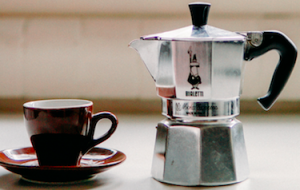 |
7
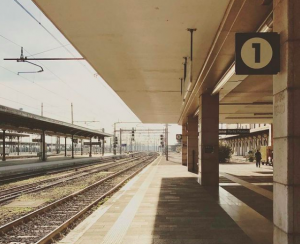 |
48
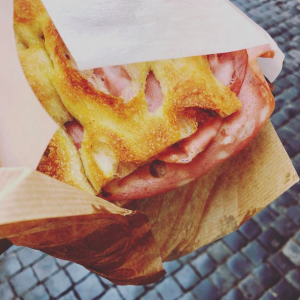 |
72
 |
| _________ | _________ | _________ | _________ | _________ |
5.1.6 
 Pratichiamo! A coppie, completate la conversazione oralmente.
Pratichiamo! A coppie, completate la conversazione oralmente.
S1: ___________.
S2: Buongiorno, mi chiamo Semia e tu?
S1: ___________. Piacere.
S2: Il piacere è il mio. Di dove sei?
S1: ___________. E tu?
S2: Io sono di Milano, sono italiana. Come stai?
S1: ___________. E tu?
S2: Bene, grazie. Qual è il tuo numero di telefono?
S1: Il mio numero di telefono è ___________. E il tuo?
S2: Il mio numero di telefono è ___________. A domani.
S1: ___________.
In this unit you will learn to:
greet people (formal and informal)
introduce yourself
ask peoples’ names
say and ask where you are from (formal and informal)
say and ask how you are (formal and informal)
pronounce the letters of the alphabet
use useful sentences and expressions in Italian
learn numbers from 0 to 100
learn the issue of "gender" in Italian
Look at these pictures and write the name of the Italian cities and monuments you recognize.
Write the names of the cities and monuments of exercise 1.1.1 on the Italian map
Go to the blackboard and write all the words in Italian that you know. Then, mark the words on your list.
Look at these images and complete the table with greetings.
Click here for the complete list of greetings.
In a circle, throwing a ball, ask the following questions to your classmates. Then, complete the table.
Listen to the dialogues and fill in the gaps with the missing words.
Formal or informal? Complete the table with an "X"...
Question
...and sort the words to the images, like in the example.
Answer
In pairs, imagine an informal conversation between Bebe and Samantha, and a formal conversation between Margherita and Rita. Use the information in the table below and the dialogues from exercise 2.2 as a model.
For information on these important Italian women:
In a pair, choose five names of famous Italian people and, taking turns, spell it out to your classmate like in the example.
Watch this video and pay attention to the pronunciation.
Read the dialogue and put the sentences in order.
Why do I use in Italian...
Complete the table with the words from the list, putting them in the appropriate category like in the example.
Then, complete the table with the general rule of masculine/feminine in Italian.
Say whether the following words are masculine or feminine. Then, transform the words into the plural as in the example.
Click here for the explanation of the Italian grammatical rule.
Read the descriptions and respond true or false. Attention: if false, explain why.
Look at the pictures and find the corresponding words in the exercise 4.3.1, as in the example
Why do I say in Italian...
but I say
What are...
Put an X next to the most appropriate response:
Complete the tables with the words of exercise 4.3.1. and find out the rule of indefinite and definite articles.
Let's practice! Insert the words with the appropriate definite article in the corresponding column like in the example.
Let's practice! Complete the sentences with the definite article or indefinite article like in the example.
Listen to the Lunapop song and fill in the blanks with the missing words.
Look at the pictures and find the matching words in the song
Complete the table with the numbers you find in the song
In pairs, taking turns, say the phone numbers to your classmate like in the example
Look at the pictures and write the name and the number of the object like in the example
In pairs, complete the conversation out loud.

